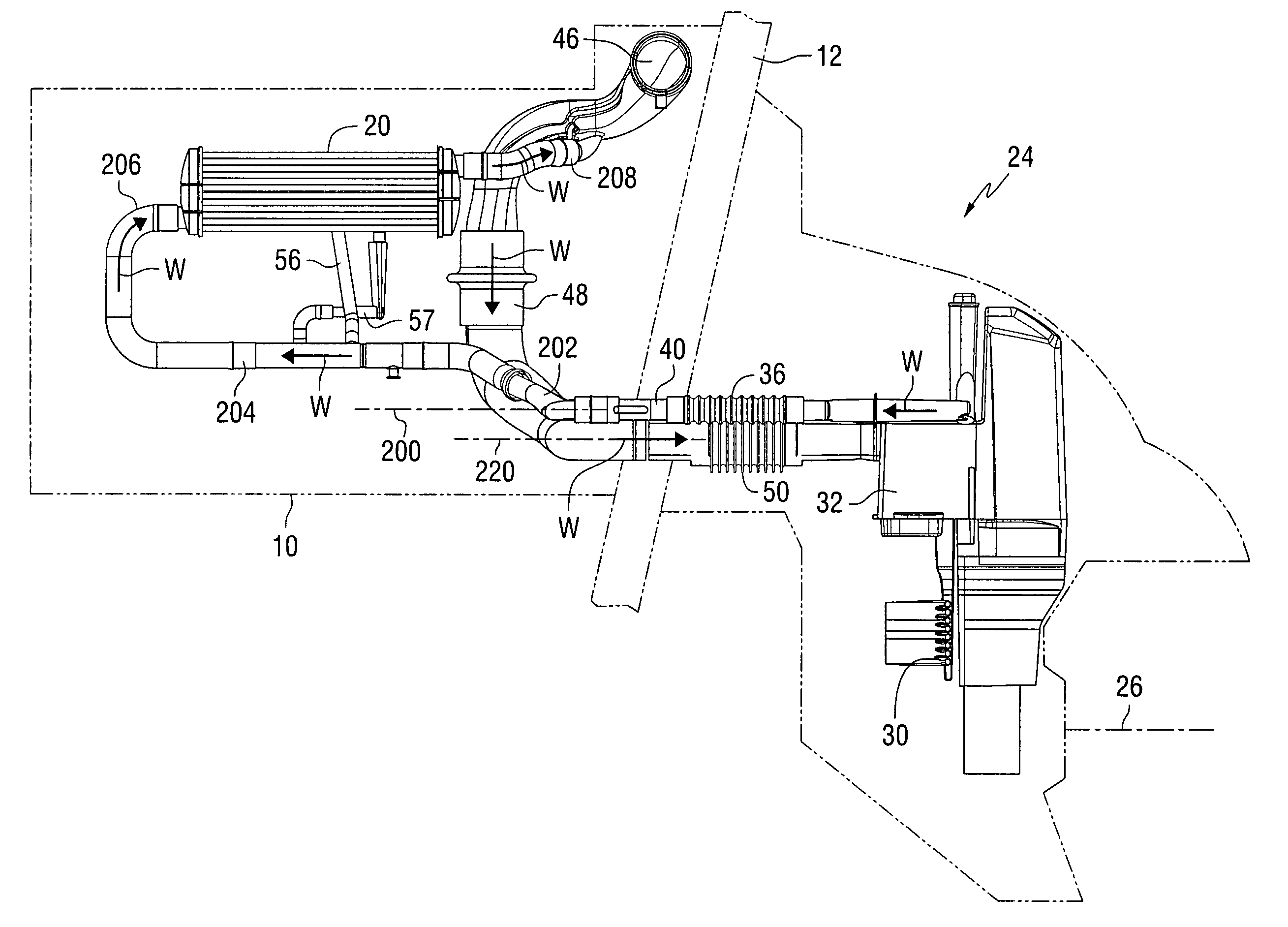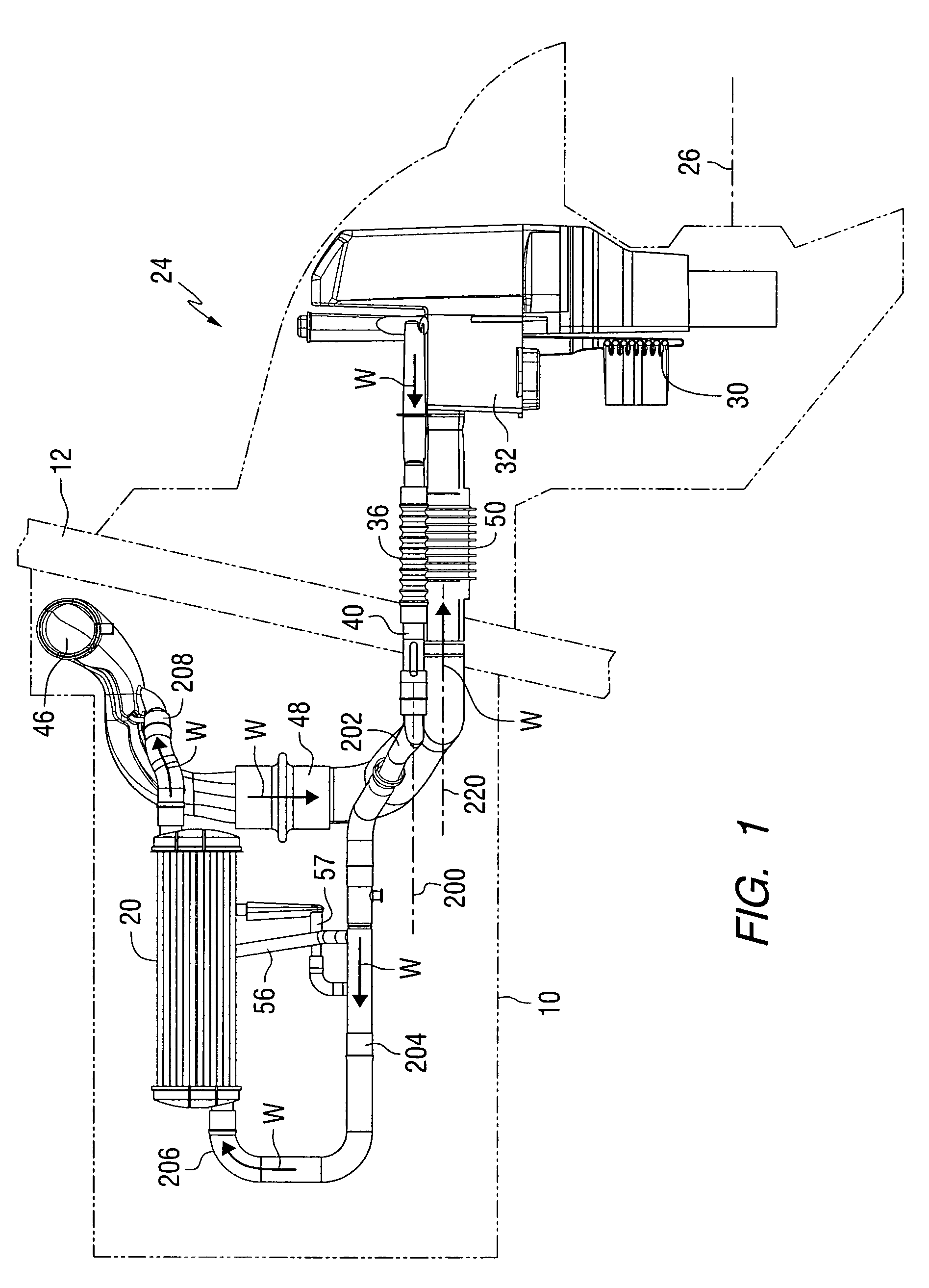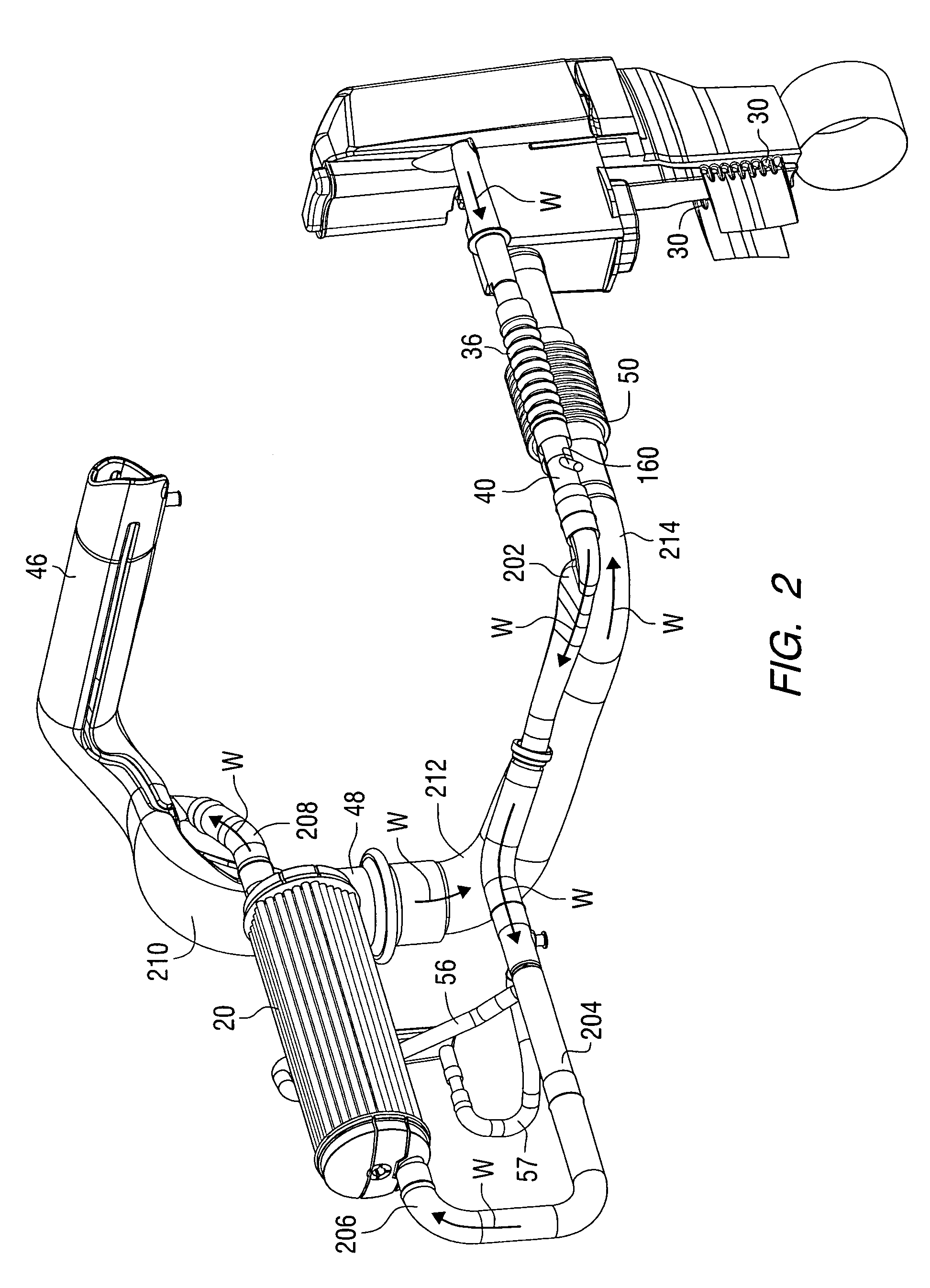Cooling system for a marine propulsion device
a technology for propulsion devices and cooling systems, which is applied in the direction of machines/engines, vessel construction, lighting and heating equipment, etc., can solve the problems of affecting the operation of the vessel
- Summary
- Abstract
- Description
- Claims
- Application Information
AI Technical Summary
Benefits of technology
Problems solved by technology
Method used
Image
Examples
Embodiment Construction
[0038]Throughout the description of the preferred embodiment of the present invention, like components will be identified by like reference numerals.
[0039]FIG. 1 is a side view which illustrates the relative positions of various components of a marine propulsion device. An engine 10 is schematically illustrated to show its relative position in front of a transom 12 of a marine vessel. The marine propulsion system illustrated in FIG. 1 could typically have first and second cooling circuits. Only the first cooling circuit is shown in FIG. 1. A second cooling circuit would provide for the circulation of a coolant, such as ethylene glycol, through cooling passages of the engine 10. The first cooling circuit, shown in FIG. 1, provides water from a body of water in which the marine vessel is operated. The first coolant circulated by the first cooling system is typically lake water or ocean water drawn from that body of water. The water circulated through the first coolant circuit passes t...
PUM
 Login to View More
Login to View More Abstract
Description
Claims
Application Information
 Login to View More
Login to View More - R&D Engineer
- R&D Manager
- IP Professional
- Industry Leading Data Capabilities
- Powerful AI technology
- Patent DNA Extraction
Browse by: Latest US Patents, China's latest patents, Technical Efficacy Thesaurus, Application Domain, Technology Topic, Popular Technical Reports.
© 2024 PatSnap. All rights reserved.Legal|Privacy policy|Modern Slavery Act Transparency Statement|Sitemap|About US| Contact US: help@patsnap.com










